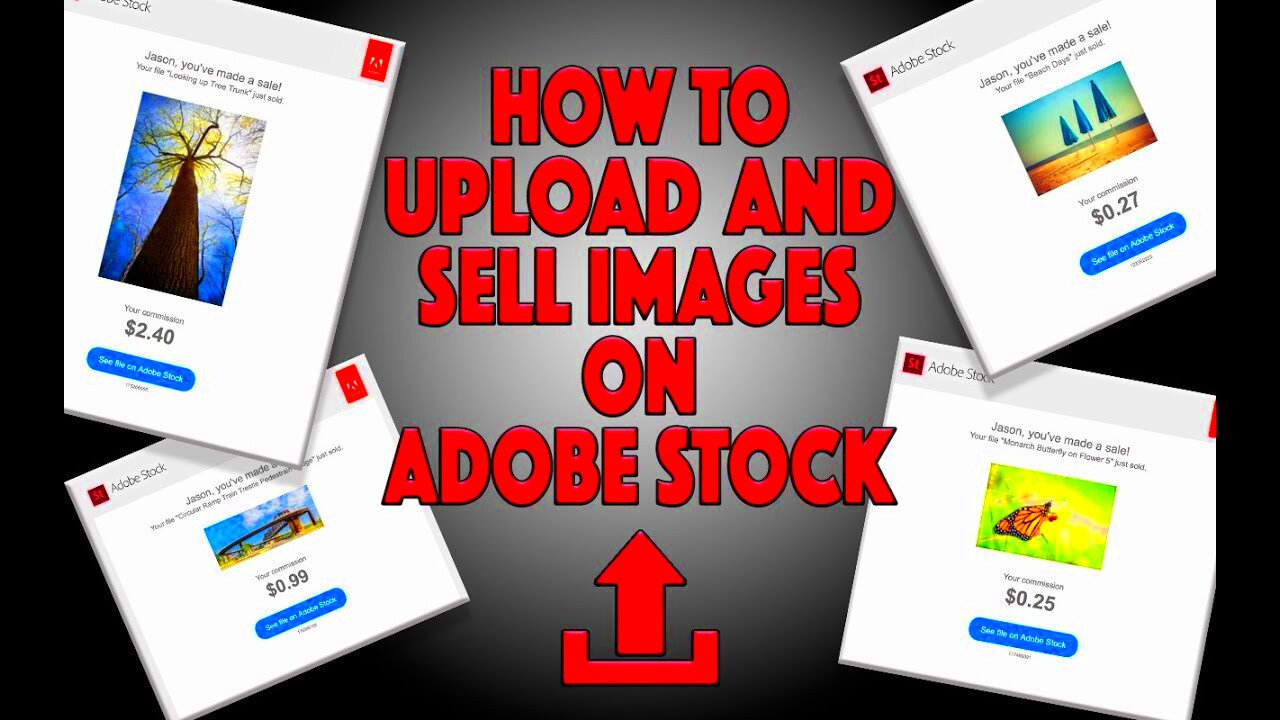Diving into
Adobe Stock can be an experience, particularly if you're new to selling. I still recall my initial reaction to it. It seemed a bit daunting at first – wondering how my creations would shine amidst a vast array of options. However, I soon came to understand that
Adobe Stock is not solely about going up against photographers or designers. It's about providing distinct and thoughtfully crafted content that fulfills the needs of people. Buyers are searching for that image and there's no reason why it couldn't be yours.
Adobe Stock offers sellers the opportunity to connect with a worldwide audience whether you're an experienced photographer, a passionate amateur capturing moments or a designer crafting illustrations. It's not simply a platform to upload your images and wish for sales. The site aims to assist you, as a seller in presenting your finest creations and receiving compensation for them. With royalty income each time your content is accessed
Adobe Stock transforms into something, more than a marketplace – it serves as a reliable stream of passive revenue.If you have old photos stored away on your computer it might be worth considering sharing them on
Adobe Stock. It's really not that complicated, all you need to do is figure out what appeals to buyers and showcase your content.
Steps to Set Up Your Adobe Stock Contributor Account

Creating your
Adobe Stock contributor account feels like unlocking a world of opportunities. When I began I expected it to be a lengthy and intricate process – you know how registration can be sometimes? However to my surprise Adobe streamlined it. I was all set up and ready to go in under half an hour.
Here’s how you can do it:- First, visit the Adobe Stock Contributor portal. You’ll need an Adobe ID to sign in. If you don’t have one, creating an account is quick.
- Once logged in, click on the "Become a Contributor" option. Fill out your basic details, like your name and payment information.
- Next, you'll need to agree to Adobe’s terms and conditions – nothing too tricky here, just standard stuff about usage rights and your responsibilities as a seller.
- After that, you’re ready to start uploading! But don’t jump ahead just yet – before uploading, make sure your work meets the requirements.
Thats the key! The initial process is simple, but the true effort lies in what comes next. Its all about regularly sharing valuable content and creating a collection that attracts buyers repeatedly.
How to Prepare Your Images for Adobe Stock

This is where things can get a bit challenging. You see,
Adobe Stock has some standards and for a good reason. They want to ensure that the content they provide is of quality. When I initially sent in my pictures I felt quite assured but to my surprise a few were turned down. It was a bit disheartening but it also taught me an important lesson – being well prepared is crucial.
Here are some important things to remember when getting your pictures ready- Quality matters: Adobe Stock looks for high-quality images, so make sure your photos are sharp, well-exposed, and free of noise.
- Check your resolution: They recommend at least 4MP for photos. While bigger isn’t always better, higher resolution gives buyers flexibility in how they use your images.
- File format: Stick to JPEG for photos and AI/EPS for vectors. It's the standard, and it keeps things simple.
- Remove logos or branding: If there’s any text or logo in your image, remove it. Even the smallest sign can lead to a rejection.
- Metadata is crucial: Don’t overlook your keywords and descriptions. Think like a buyer – what words would they use to find your image?
After facing some challenges I began to put more thought into preparing my images and noticed an increase in the acceptance rate. It does require some additional work but seeing your creations showcased on Adobe Stock makes it all worthwhile.
Frequently Asked Questions

When exploring Adobe Stock its normal to have numerous inquiries. I certainly did when I began my journey. Theres a lot to understand but finding answers to these common questions can ease the process. Here is a summary of frequently asked questions that could help clarify things for you.
How long does it take for my images to be reviewed?
- Adobe Stock typically takes a few days to review your images. It can vary depending on their workload and the volume of submissions. If you don’t hear back within a week, it’s okay to follow up.
What if my image is rejected?
- Don’t get discouraged if your image is rejected. Adobe Stock usually provides feedback on why it wasn’t accepted. Use this feedback to make improvements and try submitting again.
How do I get paid?
- Payments are made through Adobe’s payment system. You can choose to receive payments via PayPal or bank transfer. Make sure to keep your payment details updated in your account settings.
Can I upload images from my mobile device?
- Yes, you can use Adobe Stock’s mobile app to upload images, but for best results, use a desktop for managing your portfolio and adding metadata.
Do I need to sign an exclusive agreement?
- No, Adobe Stock does not require exclusivity. You can sell your images on other platforms as well. However, exclusive content often earns higher commissions.
How can I improve my chances of making sales?
- Focus on high-quality, relevant content and use effective keywords and descriptions. Regularly updating your portfolio and analyzing performance can also help increase your visibility and sales.
Feel free to reach out to the Adobe Stock community and help center if you have additional inquiries or require tailored guidance. The more knowledge you gain the smoother it gets to maneuver through the platform and maximize the impact of your contributions.
Conclusion

Starting out on Adobe Stock may feel daunting at first but if you put in some effort and follow the approach it can be an excellent platform to showcase your creativity and make some extra money. Just remember to take your time with each step – whether it’s setting up your account getting your images ready managing your portfolio or pricing your work. With a bit of patience and determination you’ll discover that Adobe Stock can be a fulfilling experience both personally and financially. So get ready to dive in and share your incredible creations, with the world!
 Creating your Adobe Stock contributor account feels like unlocking a world of opportunities. When I began I expected it to be a lengthy and intricate process – you know how registration can be sometimes? However to my surprise Adobe streamlined it. I was all set up and ready to go in under half an hour.Here’s how you can do it:
Creating your Adobe Stock contributor account feels like unlocking a world of opportunities. When I began I expected it to be a lengthy and intricate process – you know how registration can be sometimes? However to my surprise Adobe streamlined it. I was all set up and ready to go in under half an hour.Here’s how you can do it: This is where things can get a bit challenging. You see, Adobe Stock has some standards and for a good reason. They want to ensure that the content they provide is of quality. When I initially sent in my pictures I felt quite assured but to my surprise a few were turned down. It was a bit disheartening but it also taught me an important lesson – being well prepared is crucial.Here are some important things to remember when getting your pictures ready
This is where things can get a bit challenging. You see, Adobe Stock has some standards and for a good reason. They want to ensure that the content they provide is of quality. When I initially sent in my pictures I felt quite assured but to my surprise a few were turned down. It was a bit disheartening but it also taught me an important lesson – being well prepared is crucial.Here are some important things to remember when getting your pictures ready When exploring Adobe Stock its normal to have numerous inquiries. I certainly did when I began my journey. Theres a lot to understand but finding answers to these common questions can ease the process. Here is a summary of frequently asked questions that could help clarify things for you.
When exploring Adobe Stock its normal to have numerous inquiries. I certainly did when I began my journey. Theres a lot to understand but finding answers to these common questions can ease the process. Here is a summary of frequently asked questions that could help clarify things for you. Starting out on Adobe Stock may feel daunting at first but if you put in some effort and follow the approach it can be an excellent platform to showcase your creativity and make some extra money. Just remember to take your time with each step – whether it’s setting up your account getting your images ready managing your portfolio or pricing your work. With a bit of patience and determination you’ll discover that Adobe Stock can be a fulfilling experience both personally and financially. So get ready to dive in and share your incredible creations, with the world!
Starting out on Adobe Stock may feel daunting at first but if you put in some effort and follow the approach it can be an excellent platform to showcase your creativity and make some extra money. Just remember to take your time with each step – whether it’s setting up your account getting your images ready managing your portfolio or pricing your work. With a bit of patience and determination you’ll discover that Adobe Stock can be a fulfilling experience both personally and financially. So get ready to dive in and share your incredible creations, with the world!
 admin
admin








